This article originally appeared on August 31, 2018 with the heading: “Eritrea-Ethiopia: A Confederation We Didn’t Vote On.” In the heady summer of 2018, most of you were too dazed to have read it and now you keep being surprised by the Isaias Afwerki-Abiy Ahmed love affair. Maybe the heading was too subtle? So, here it is: it is a conspiracy. The idea of confederating Eritrea with Ethiopia was something Isaias Afwerki wanted badly in 1991. But there were two forces working against it: the people of Eritrea and their political leaders, particularly the victorious EPLF; and the Tigray People’s Liberation Front (TPLF) which, for its own domestic ambitions, wanted no role for Isaias in Ethiopia. (If you want to have your head blown, go back and listen to Aboy Sebhat interview from a few years ago which all ridiculed when he said “TPLF cares more about Eritrean sovereignty than EPLF” : replace EPLF by Isaias, and put his statements within the current context and conspiracy.) Now with the TPLF sidelined, and the Eritrean people arrested, exiled, and feeling demoralized, Isaias and his confederalist feel this is the perfect time to pursue his life-long dream at warp speed. In fact, they are working faster to make their dream a reality than we are to arrest it. Read on.
“A confederation is an institutional arrangement in which the policies of different districts are, at least in part, influenced by the preferences of voters from other districts in the confederation. In practice, this is usually accomplished through a complex array of overlapping jurisdictions, representative governments at different levels, and a legal system that allocates decision-making authority and responsibility across these different levels. The end result is ultimately a vectors of policies, one for each district.” – Political Confederation Author(s): Jacques Crémer and Thomas R. Palfrey Source: The American Political Science Review, Vol. 93, No. 1 (Mar., 1999), pp. 69-83
In this article, I argue that Eritrea and Ethiopia are well on their way to forming a confederation. This would be the fourth type of configuration for the two countries. Take One: Eritrea-Ethiopia Federation of 1952. Take Two: Dissolution of Federation and Annexation of 1962. Take Three: Referendum and Independence of 1993. Take Four: the “Peace & Friendship” Agreement of 2018. What’s noteworthy is that, unlike all previous configurations (federation, dissolution, independence), the present one is happening without the vote (even a coerced one), or even the knowledge, of the Eritrean people.
The first thing to say about this is that both the government of Ethiopia and Eritrea (in the person of Isaias Afwerki ONLY) had expressed their desire for this as early as 1993. Shortly after Eritrea’s referendum on independence was held, Reuters reported (on May 3, 1993) that then-President Meles Zenawi “did not rule out confederation, a view shared by Eritrean leader Isayas Afewerki.” The second thing to say about this is that, on the merits, this may very well be the best arrangement for Eritreans and Ethiopians, but that’s hardly the point. The third thing to say about it, which will be the focus of this article, is that the author’s objection to it is that it is being done, at least from the perspective of Eritreans, very secretly and without consulting the people. It appears to be the execution of the long-term dream of President Isaias Afwerki, now that all who may oppose him are dead or disappeared or exiled. The fourth thing to say about it, which we won’t spend a lot of time on, is that confederation arrangements are almost always a stop on the path to fuller integration (federation, union) or separation following dissolution. That is, confederations between sovereign states are almost always temporary because there isn’t a long-term agreement on how weak or strong the “center” ought to be.
In this new configuration, what one notices is an assertive Ethiopia in contrast with a meek Eritrea; a delegation of responsibilities from Eritrea to Ethiopia; an absorption of responsibilities by Ethiopia (from Eritrean state media to Ethiopian media, where Eritreans now go to hear news about Eritrea); rewriting history in a way that is most favorable to the “we are one people” narrative; absolutely no change in the governance of Eritrea and zero reform in its criminal path; two leaders who scorn the involvement of people in decision-making; and lastly, people who knew better, should have spoken up much sooner, now saying, “oh, yes, I saw the warning signs early on.”
Here are the sequence of events:
June 26, 2018: It all started in Addis Abeba. Six days after Eritrean President Isaias Afwerki informed the world that he was sending delegates to Addis Abeba to study the Ethiopian proposal for peace, his two delegates, Foreign Minister Osman Saleh and PFDJ Political Director/Presidential Advisor Yemane Gebreab arrived in Addis Abeba to a stately reception. In his address, Foreign Minister Osman Saleh, referring to the reception, said that he can bear witness that in Prime Minister Abiy Ahmed “we have a humble leader” (ናይ ብሓቂ ምቕሉል ዝኾነ መራሒ ከም ዘለና…)
This was dismissed as a slip of tongue, perhaps from someone to whom Tigrinya is not a first language and is not known for being a great orator. Perhaps the great speaker and polemicist Mr. Yemane Gebreab would say something that reflected the sentiments of Eritreans: a peaceful but proud people? It feels like the last 20 years never happened, he said. Then he used the word “love”, which was such an uncomfortable usage in his parlance he felt compelled to sheepishly credit it to PM Abiy Ahmed.
https://youtu.be/ymWYGHEQW8w
July 8, 2018: Prime Minister Abiy Ahmed arrives in Asmara, Eritrea. In his address at a State dinner, President Isaias Afwerki, hosting the event, says he has no prepared speech. After describing the elation people showed in welcoming Abiy Ahmed as an ability to exercise their right (how?), he laments the lost opportunities of the past 25 years. Not 20 (since the 1998 war), but 25 (since 1993, which coincides with Eritrea’s referendum.) But now, he says, we can say, “we didn’t lose, there was no loss, we recovered all our property.” He congratulates the people and the Prime Minister and, less than 3 minutes later, he says: I am finished. Then it was the Prime Minister’s turn and he speaks for more than 15 minutes. His speech included this: “… today, officially, President Isaias Afwerki has given me the responsibility of Foreign Minister so, wherever I go, if I represent Mr. Osman, don’t think of it as duplication….”
https://youtu.be/Qq2DKC19DLE
July 9, 2018: Eritrea and Ethiopia sign the “joint declaration of peace and friendship” referred to as the Five Pillar agreement by Eritrea’s Minister of Information in a tweet. The agreement jumps straight from what Eritrean government officials used to call a state of war to friendship overnight. It has no timetable for demarcation and troop removal from Eritrea’s territories which used to be, for 16 years, Eritrea’s precondition for dialog and normalization. THERE IS NO COPY OF THE SIGNED AGREEMENT ANYWHERE. All sources referring to it (UN, US Embassy, Western media, Aljazeera) have only relied on the Minister of Information’s tweet about it. Here’s how it compares with the Five Point Peace Plan Ethiopia proposed (and Eritrea rejected) in November 2004:
| Agenda | Ethiopia's Five Point Peace Plan (November 2004) | Eritrea-Ethiopia Five Pillar Peace Plan (July 2018) |
|---|---|---|
| Peace | Resolve the dispute between Ethiopia and Eritrea only and only through peaceful means | The state of war between Ethiopia and Eritrea has come to an end. A new era of peace and friendship has been opened. |
| Investigating Root Cause of Conflict | Resolve the Root Causes of the Conflict Through Dialogue With the View to Normalizing Relations Between the Two Countries | No investigation. |
| Qualifiers | Ethiopia Accepts, in Principle, the Ethiopia-Eritrea Boundary Commission Decision | No qualifiers |
| Process of Demarcation | Ethiopia Agrees to Pay Its Dues to The Ethiopia-Eritrea Boundary Commission and to Appoint Field Liaison Officers | The decision on the boundary between the two countries will be implemented |
| Dialogue | Start Dialogue Immediately with the view to implementing the Ethiopia-Eritrea Boundary Commission’s decision in a manner consistent with the Promotion or Sustainable Peace and Brotherly Ties between the Two Peoples. | The two governments will endeavor to forge intimate political, economic, social, cultural and security cooperation that serves and advances the vital interests of their peoples |
| Beyond Dialogue | Silent | Transport, trade and communications links between the two countries will resume; diplomatic ties and activities will restart |
| Regional Peace | Silent | Both countries will jointly endeavor to ensure regional peace, development, and cooperation |
July 14: President Isaias arrives in Ethiopia and is serenaded in Addis Abeba. In his first speech, at Hawassa, he says that while we are trying to achieve our goals, “anybody who says the people of Eritrea and Ethiopia are two peoples is someone who doesn’t know the truth.”
July 14: In his second address, he says: “ህዝቢ ኤርትራን ህዝቢ ኢትዮፕያን ረኺቡዎ ዘሎ ዕድል ቀሊል ነገር ኣይኮነን እወ ኣነ ተደጋጋሚ ተደጋጋሚ ኢለዮ ኣለኹ ዝኾነ ዝግበር ነገር እንድሕር ኣሎ ወኪል ንስኻ ኢኻ: ንስኻ ኢኻ ትመርሓና: ንቀልዕለም ኖ ኖ ናይ ንቀልዓለም ኢለ ከሐጉሶ ኢለ ወይ ዘረባ ንኽጥዕመኒ ምእንቲ ኢለ ዝብሎ ዘይኮነ ናይ ብሓቂ እዚ ሕጂ ህይወት ኣልቢስና ንደፍኦ ዘለና ሰላም ፍቕሪ ጸጋ ናይ ክልቲኣቶም ህዝብታት ጥራይ ዘይኮነ ናይ ልምዓት ናይ ገስጋስ ናይ ዕብየት መደባትና ሓደ ካብቲ ካልእ ዝፍለ ኣይኮነን ነዚ ካኣ ዶክተር ኣብይ ብዝድለ ክመርሓና እዩ::” (The opportunities that the people of Eritrea and Ethiopia find now are not trivial. I have told him [Prime Minister Abiy] repeatedly, repeatedly: in any affair, if there is something that needs action, you are our representative. You are the one to lead us. I am not saying this to flatter him or to please him or for the sake of saying it: because our [Eritrea and Ethiopia’s] paths of peace, love, prosperity, developmental plan are indistinguishable from each other, Dr. Abiy Ahmed will lead us as required.) He wasn’t done: in his speech at the Millenium Hall, after much be-still-my-beating-heart chest pounding, he did something he had never done in his political career: give a speech in Amharic.
There was no clue Isaias Afwerki was going to melt: the last thing he did before he left Asmara was to address Sawa National Service conscripts and his message was ዕጥቅኹም ሸጥ ኣብሉ (remain in a state of alert).
July 18: Ethiopian Airlines flies to Eritrea for the first time in 20 years. Among the passengers was Ethiopia’s former Prime Minister, Hailemariam Desalegn, who described the trip as a “golden moment for the two countries and the two people.” Also among the first passengers, Ethiopian pentecostal pastor “Prophet” Surafael who was received by followers of his faith, which is banned in Eritrea and where a lot of its practitioners remain in jail or unaccounted for. Ethiopian Airlines says it will have daily flights to Eritrea. The Pentecostals were arrested in the following weeks.
https://youtu.be/8Y-F4Lw89tg
July 19: Mesfin Hagos, a veteran leader of EPLF (member of central committee and executive committee) discloses to Australia’s SBS radio that three months before Eritrean independence in May 1991, President Isaias Afwerki had approached some members of the EPLF leadership, including him, about forming a joint government with EPRDF, the ruling coalition of Ethiopia. While the other leaders of the Central Committee had nothing to say, he expressed his objection, as something that would be unacceptable to Eritreans after so much sacrifice, he said. Asked why he was disclosing this information now, he said it is because (a) he was asked a direct question by SBS Radio and (b) he was triggered to it by the recent developments between Eritrea and Ethiopia.
July 23: The government of Eritrea, after floating rumors of pending release of prisoners, actually arrests an additional 19 – discloses Hannibal Daniel to SBS Radio
“በዚ ዝመጸ ሰላም ምኽንያት ፡ ኣብ ኤርትራ ብእምነቶም ተኣሲሮም ካብዘለዉ፡ ዛጊት ዋላ ሓደ ዝተፈትሐ የለን። 19 ኣመንቲ ግና ኣብዚ ቕነ ተኣሲሮም ኣለዉ።” ሃኒባል ዳኒኤል | SBS Your Language #Eritrea https://t.co/HTpYbywozY
— Brehane-meskel Araya (@brehane007) July 23, 2018
July 24: Prime Minister Abiy Ahmed and President Isaias Afwerki were given the “Order of Zayed” at Abu Dhabi summit hosted by Abu Dhabi Crown Prince Mohammed bin Zayed. Along with the King of Saudi Arabia, the Crown Prince of Abu Dhabi is credited for the Eritrea-Ethiopia normalization of their 20-year long cold war. There was a lot of jockeying to establish submission: Isaias Afwerki insisted that the Crown Prince hold the Ethiopian Prime Minister with his right hand, which is considered a sign of of respect in Arab culture:
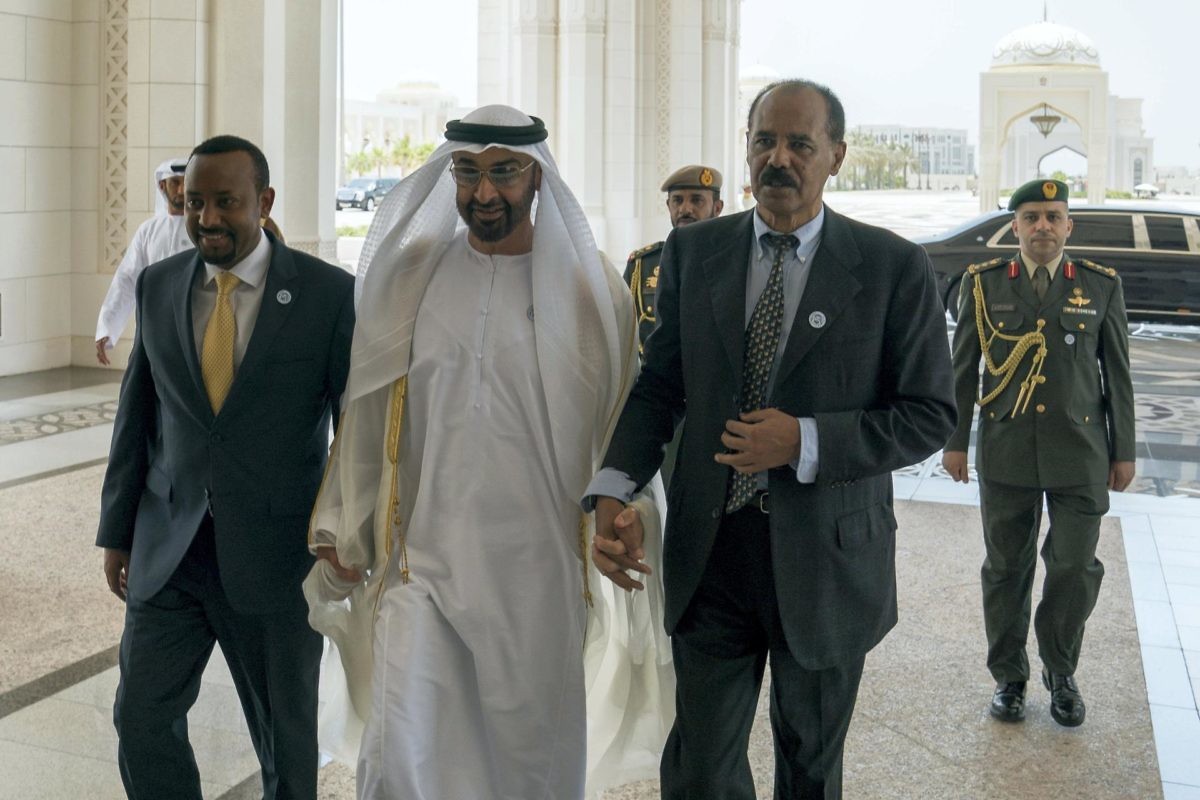
July 27: Eritrea’s president invites Somalia’s president for a meeting in Eritrea. The Somali president accepts and arrives the next day. Once there, he calls for the UN to lift sanctions on Eritrea. Djibouti replies that it is “deeply shocked” by the statement of the Somali president because the sanctions were not imposed due to Eritrea and Ethiopia being in a state of war:
BREAKING: Djibouti says it’s “deeply shocked” by statement made by Pres @M_Farmaajo calling for lifting of sanctions and economic restrictions on Eritrea. Djibouti says it’s “unacceptable” to see Somalia supporting Eritrea at a time when Asmara is “occupying” Djibouti territory. pic.twitter.com/rJxWvfaPdK
— Harun Maruf (@HarunMaruf) August 1, 2018
July 28: Ethiopia’s Prime Minister says the border issue is a minor issue and the two countries have not discussed it since they signed the peace and friendship agreement weeks earlier. There are contentious issues which will be dialogued. He also expressed his view that calls for involving locals on border matters are “village talk”: (የመንደር ወሬ: idle, unsophisticated chat). “When the former prime minister [Meles Zenawi] called me to serve [in the Eritrea-Ethiopia border war], my friends and family and I served without question,” he said, implying now that he is the Prime Minister, the people should not insist on participating in the decision-making.
July 31: The UN Security Council decides to extend sanctions on Eritrea despite calls for their removal from Ethiopia and Somalia. Ethiopia actually spoke more eloquently for their removal than the Eritrean delegate did.
August 1: Hailemariam Desalegn, Ethiopia’s former Prime Minister, in Harare as part of an election observation team, had his picture taken with exiled Ethiopian dictator Colonel Mengistu Hailemariam and expressed his wish that he would be reconciled, too. Eritrea and mostly-Tigrayan Ethiopian rebels fought for over a decade and half, and paid a heavy price to defeat the man who was called the “Black Stalin.”
The Good, The Bad & The Ugly.
(Mr Good not pictured)#Eritrea. #Ethiopia pic.twitter.com/6A5TzaP2Fc
— SAAY (@saayEritrea) August 2, 2018
August 4: Eritrean Airlines begins its 3-times weekly flight to Addis Abeba, Ethiopia. Passengers include the Minister of Tourism, and the Minister of Transportation.
https://twitter.com/ZeMike09/status/1025799499464171520
August 6: Ethiopia’s Foreign Minister, Workneh Gebeyehu, and Oromio Regional President, Lemma Megersa, arrive in Eritrea to negotiate terms of reconciliation with Eritrea-based Oromo Liberation Front faction led by Dawud Ibsa.
August 9: Regarding the dispute between Saudi Arabia and Canada, Eritrea’s government issues a press release condemning the “irresponsible, provocative and audacious” statement of Canada regarding the Kingdom of Saudi Arabia’s human rights record. Eritrea further calls on Saudi Arabia to take “appropriate measures” to protect its sovereignty. Saudi Arabia considered Canada’s call to release an arrested civil society leader as violation of its sovereignty and had already taken “appropriate measures” 3 days earlier.
August 10: UAE and Ethiopia sign an agreement to build an oil pipeline connecting Eritrean port Asab to Ethiopian capital Addis Abeba. In the meeting held between Reem Al Hashimy, UAE’s Minister of State for International Cooperation and Abiy Ahmed, Ethiopia’s Prime Minister, there was no Eritrean presence.
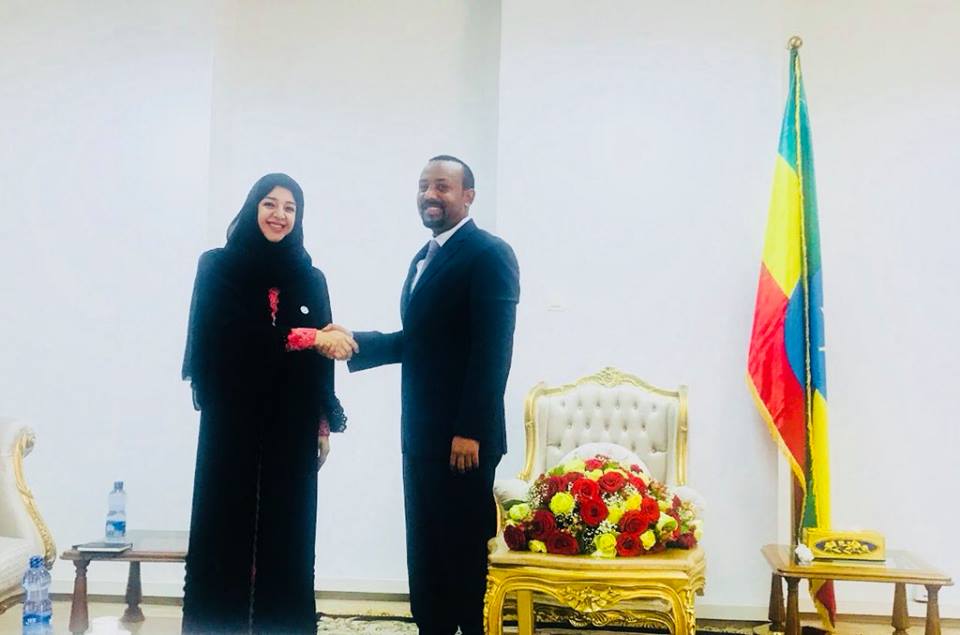
August 14: Radio Erena reports that Saudi Arabia was asking Eritrea to send troops to Yemen to help it defeat the Houthi rebels. In 2014, the Monitoring Group on Somalia and Eritrea (SEMG) reported that it had received “credible information that Eritrean soldiers are embedded with the United Arab Emirates contingent that is fighting Yemeni forces.”
Independent #Eritrea media #radioerena reporting #SaudiArabia asking #Eritrea to send soldiers to #Yemen. Soon, #Ethiopia. In 15, @UN #SEMG report: #Eritrean soldiers already embedded with #UAE.
Hope ur guy is reasonable @Natberh. Ours hasn’t made a good decision in decades. pic.twitter.com/3gS40vrVqz
— SAAY (@saayEritrea) August 15, 2018
August 16: Representatives of an Ethiopian region, Amhara, travel to Eritrean capital, Asmara, to reconcile with one of the Eritrea-based Ethiopian rebels, Amhara Democratic Forces Movement. They sign a reconciliation agreement allowing them to pursue peaceful competition in Ethiopia. The Eritrean president is extended, and accepts, an invitation to visit Amhara State.
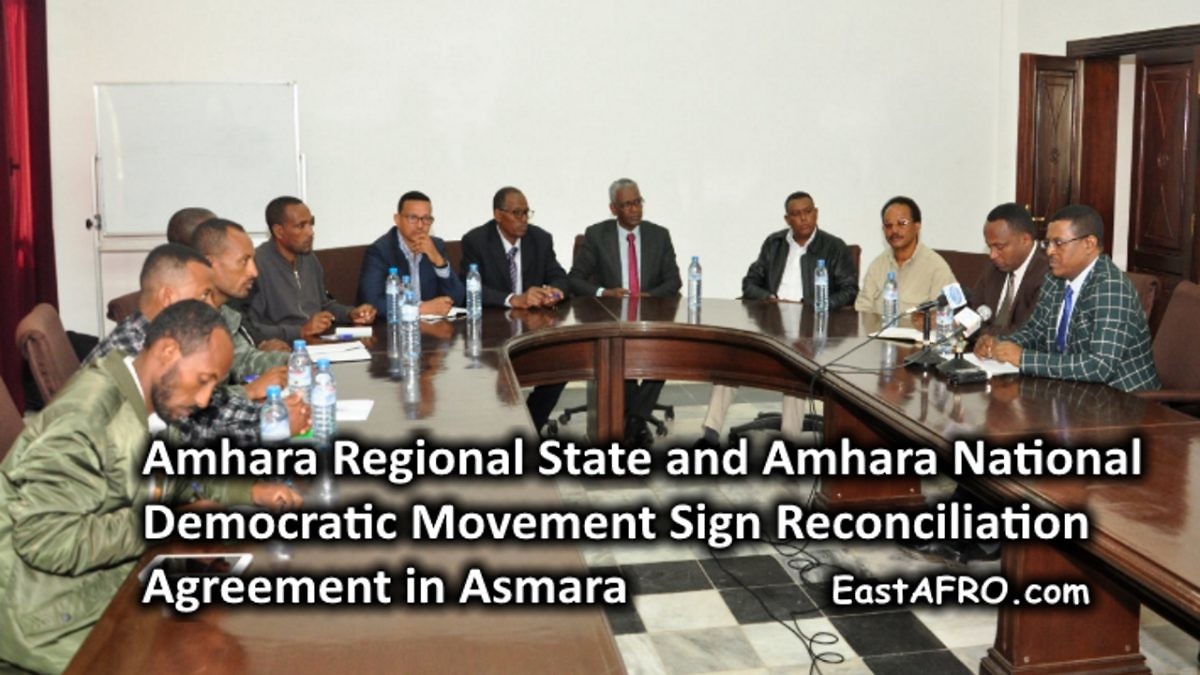
August 17: Ms. Bronwyn Bruton, a noted supporter of the Government of Eritrea who is usually the canary-in-the-coal-mine of the PFDJ always foreshadowing what is to happen next, said that it is unrealistic for Eritreans to expect all those who have been arrested without charges to be released because, after all, Eritrea is in the Horn of Africa, a region which faces extremist threats and ethnic and political conflicts.
Hi @yoelalem. Sadly, it is hard to release all these prisoners. #Eritrea is in HOA region that faces extremist threats & ethnic & political conflicts. Asmara has suppressed these legitimate threats by arresting anyone who might possibly cause trouble or unrest…
— Bronwyn Bruton (@BronwynBruton) August 17, 2018
August 18: South Sudan President Salva Kiir arrived in Asmara at the invitation of Eritrean President Isaias Afwerki. The purpose of the meeting was to discuss bilateral issues including building a pipeline between South Sudan and Eritrea.
.#Eritrea President Isaias Afwerki, indicted by the @UN for committing crimes against humanity, salutes #SouthSudan president @salvakiir, who is accused by @AfricanUnion of crimes against humanity.
Cheers, impunity! pic.twitter.com/ljbDKcYACM
— SAAY (@saayEritrea) August 21, 2018
August 23: Andargachew Tsige, the leader of Gnbot-7, one of the Eritrea-based Ethiopian opposition groups (and the one who takes credit for reconciling Eritrea with Ethiopia), is interviewed by LTV Ethiopia. In answer to a question on the relationship between Eritrea and Gnbot-7, he says that if TPLF had not rushed the EPLF to hold the referendum in 1993, had it been delayed by 5 years, he doesn’t believe the outcome (99% for independence) would have been the same. He explains his rationale by saying that Eritreans were devoted to Ethiopia (more Eritreans than Tigrayans fought to defend Ethiopia from aggressors, he says) and had it not been for Haile Selasse’s misguided decision to dissolve the federation, it is clear that based on our looks, our beliefs, and Eritrea’s volunteering alongside Ethiopia against foreign aggressors, Eritrea is “a miniature Ethiopia.” He also calls notorious criminals of PFDJ who have been indicted for crimes against humanity as clean as monks.
https://youtu.be/ZF42T31mMK8?t=33m55s
August 25: “Germany’s federal minister for economic cooperation and development, Gerd Müller, who is visiting several African countries, has said about 15,000 young Eritreans arrived in Germany this year, making in total some 75,000 Eritreans seeking asylum in Germany. Müller said he hoped Eritrea would change its system of years long military conscription. He also urged the country to move toward establishing democratic structures.” You wouldn’t know this is what he said from shabait.com article showing President Isaias Afwerki, with hand-in-pocket, welcoming the German delegation to Adi Halo. But you can read it here.
August 27: Amhara Mass Media Agency Ethiopia interviews “eyewitnesses” in Eritrea who praise the Government of Eritrea’s modesty: the Minister of Justice hails a taxi with the masses, they report (not the Minister of Justice doesn’t appear to know anything about justice), etc, etc.
August 28: In an interview with Australia’s SBS Radio, Ambassador Abdella Adem (a veteran combatant of EPLF who was Eritrea’s ambassador to Sudan) says President Isaias Afwerki always had a plan to weaken Eritrea’s Muslim sector and in his conversation with Ethiopia’s late Prime Minister Meles Zenawi, he came to learn that President Isaias was dispatching trusted confederates (like the late Naizghi Kiflu) to rekindle the “Tigrai-Tigrini” alliance.
August 28: Tigray People’s Democratic Movement (TPDM), another Eritrea-based Ethiopian rebel group, is reconciled with the representatives of the Federal Democratic Republic of Ethiopia. Unlike other rebel groups who were reconciled with the Ethiopian government representatives of their region (Oromia, Amhara), the Tigrayan rebels were reconciled with the central government because the Eritrean Government and Ethiopia’s Tigray regional state government are still in Cold War, long after the “Peace & Friendship Agreement” was signed.
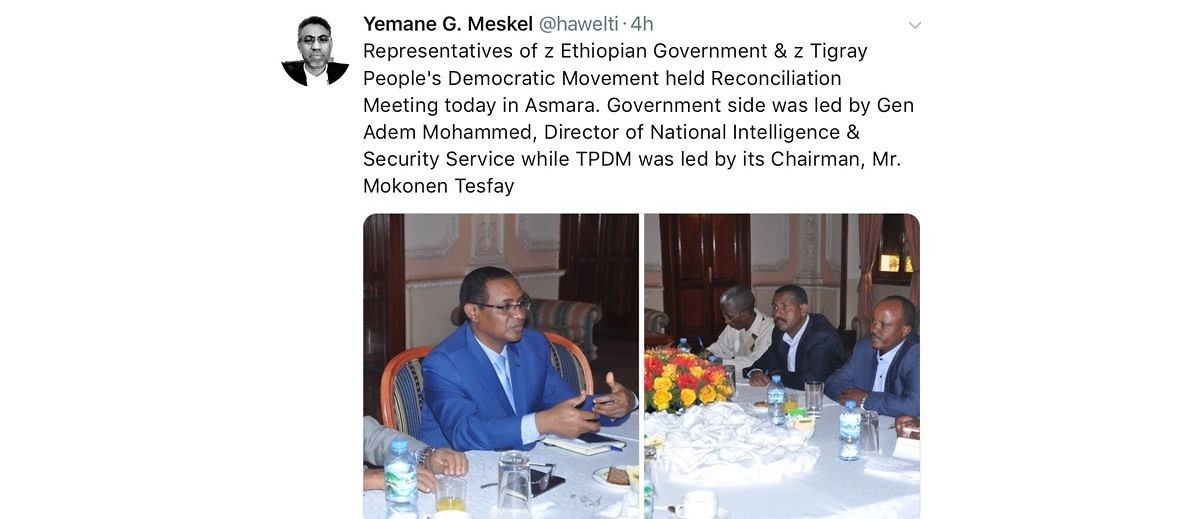
August 29: Eritrea’s former Minister of Finance, Berhane Abrehe, writes a two-part 450-page book entitled “Hagerey Ertra” (Eritrea, My Country) exposing the criminality and treachery of Isaias Afwerki, including his long-term intent to surrender (“fully integrate”) Eritrea to Ethiopia. He somehow managed to have the book published in the Diaspora and despite opportunities to go to exile and defect, the ailing Minister said that he will face whatever expects him in his home country, Eritrea. Berhane’s wife Almaz has been in jail for over a year and the two have four children. Read the excerpt of his book here.
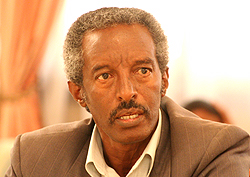

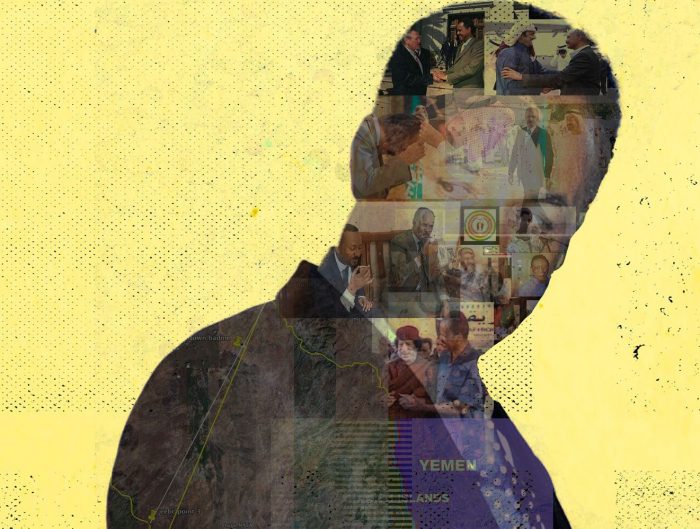
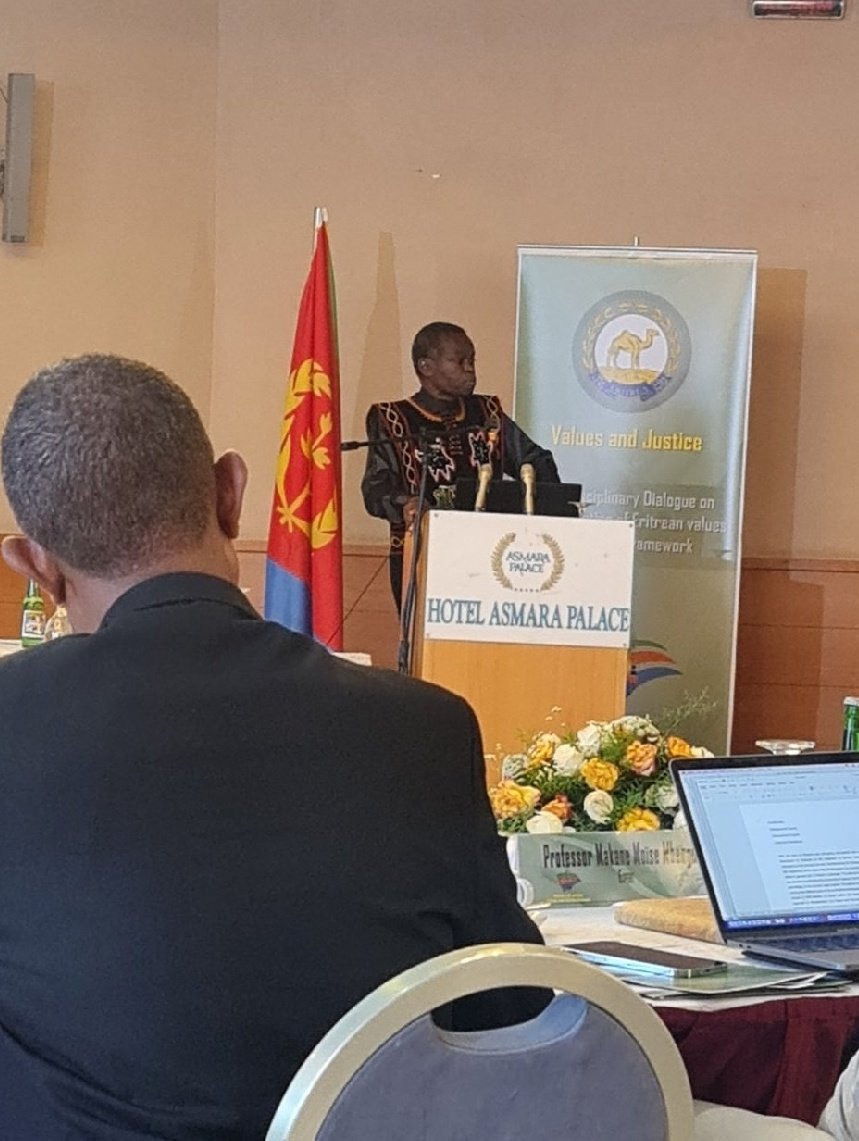


Leave A Reply